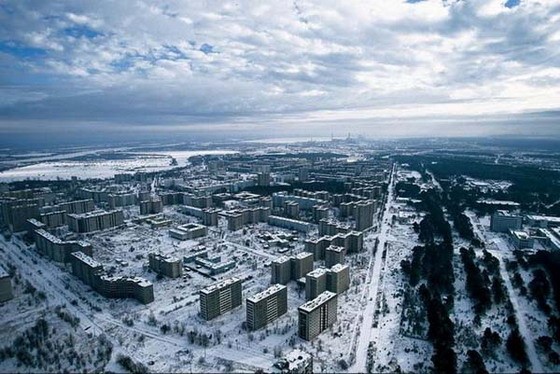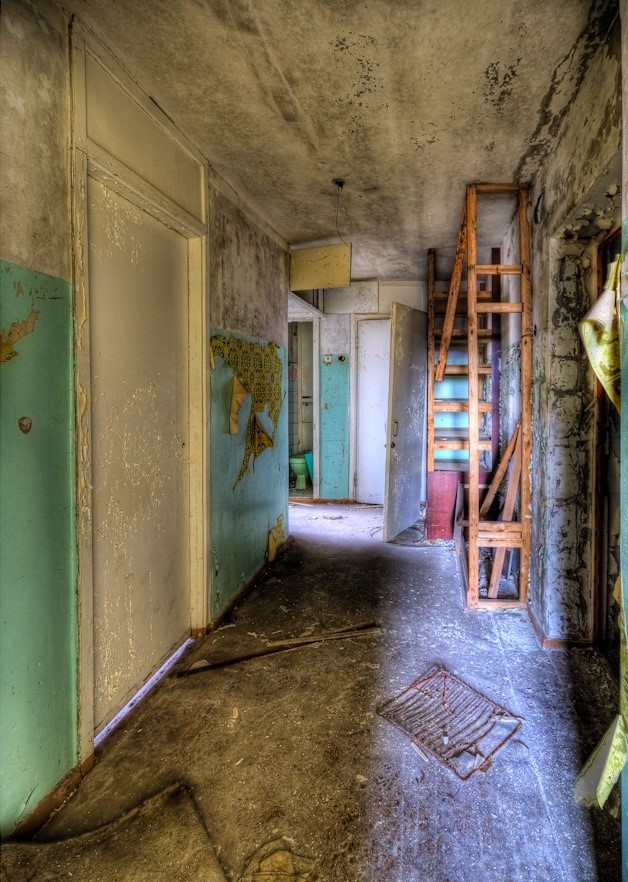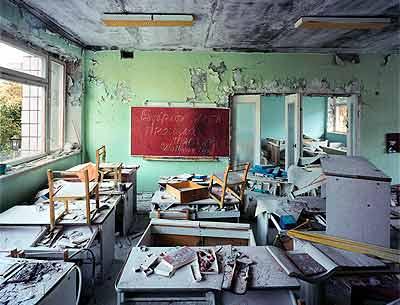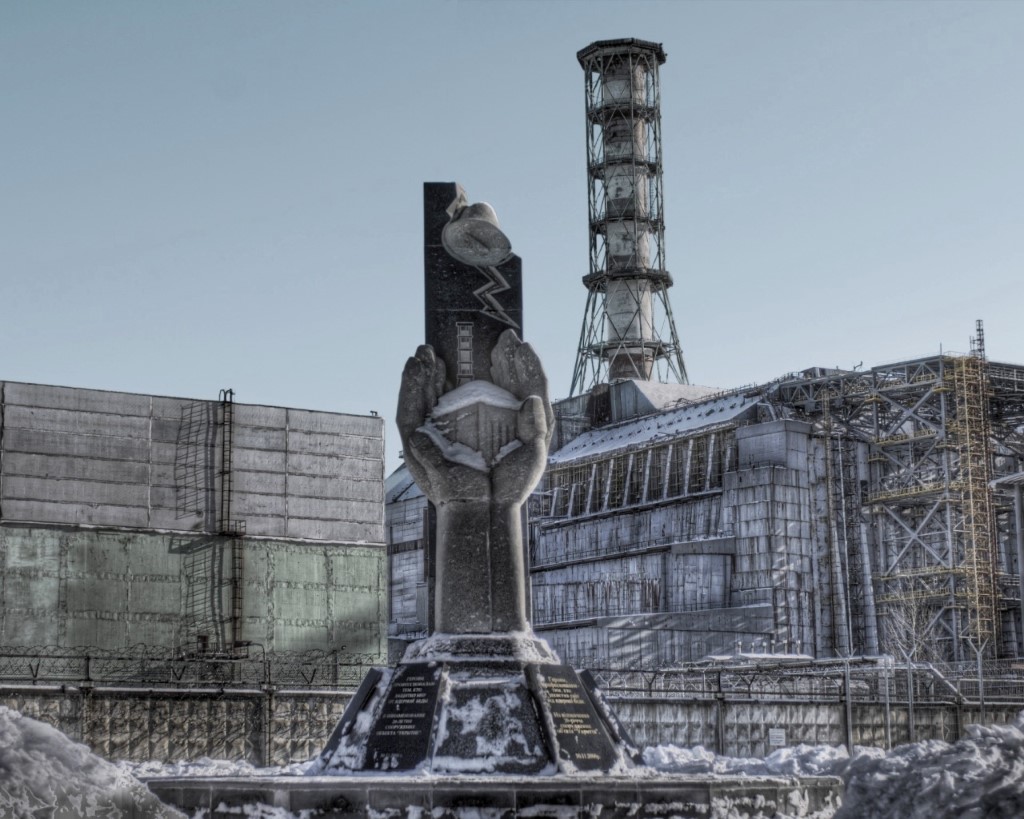Chernobyl is closer then you think! Tours to Chernobyl are safe and incredibly exciting
Chernobyl before the disaster
You may be interested what is Chernobyl, or, probably, better to say what WAS Chernobyl. Let us tell you a bit of history of this town, nowadays mainly known for one of the horrible technological catastrophes of the 20th century - the so-called Chernobyl accident.

Not many people even know where Chernobyl is situated. This small town is located on the river Pripyat in approximately 140 km from Kyiv, the capital of Ukraine. It was founded long ago, in the year 1193. Even before the sadly known disaster that happened in Chernobyl in 1986 its population wasn't numerous. Thus, just before the Chernobyl accident it only counted about 12,000 of habitants
However, the small town of Chernobyl is first of all known for its nuclear power plant and the 1986 accident, which became the most terrible nuclear accident in the world's history.
The 1986 Chernobyl disaster happened on the 26th of April at 1.23 am, when a powerful explosion destroyed the 4th power block of the nuclear power plant. The Chernobyl incident was the reason for the most terrible radiation emission in world's history. This caused serious social and economic problems for the population of the former Soviet republics of Ukraine, Belarus and Russia. Nowadays it is counted that 70% of the radioactive fallout from Chernobyl disaster landed in Belarus, affecting approximately 3,500 towns and villages, and about 2.5 million people.

Chernobyl accident really influenced lives of thousands people. Just look at the numbers: the whole town of Pripyat with about 49,360 people of population was completely evacuated within 36 hours after the Chernobyl accident. During the subsequent weeks and months an additional 67,000 people were evacuated from their homes in the affected areas.
So, this is a brief answer to the question "What is Chernobyl". Today Chernobyl power station is still a very dangerous yet attractive place. You can find lots of Chernobyl disaster pictures, photos and videos. Dozens if not hundreds of Chernobyl documentaries and have been shot in the recent 25 years. The Chernobyl explosion has provoked great interest towards the disaster. Consider several examples:
The popular concept of Chernobyl Stalkers (people who visit Chernobyl zone without any official permission looking for valuable and interesting artifacts) lies in the plot of popular computer game called STALKER: Shadow of Chernobyl, developed by GSC Game World studio in 2007.
Another evidence of the popularity of the Chernobyl accident is the fact that thousands of people want to visit it in order to realize Chernobyl tragedy better. You may wonder what a person can do in a place, where the level of radiation is about 4000 Roentgens near the reactor. However, the radiation level in certain areas in Chernobyl doesn't exceed existing norms. For example, nowadays there are approximately 128 communities in the Chernobyl area with so-called "resettlers" who decided to come back even despite the sadly known Chernobyl accident.
Today visiting Chernobyl is a unique way to discover the mysteries hidden behind the radiation. This is a unique chance to realize not only the Chernobyl disaster itself but also the affects it caused on the lives of people and on the environment. This is an opportunity to get unique pictures and videos about the situation in Chernobyl area today, 25 years after the famous Chernobyl accident.
Reconstruction of events before the accident
Testing intended to check the possibility of using the steam turbine rotor energy for emergency generators and that subsequently led to the accident, was due to begin on April 25th, 1986. The day shift workers had been previously apprised of all execution phases of the test.
Experiment required the reactor voltage be reduced to 22-31% of its full power. During the first stage of this procedure that lasted from 01:06 p. m. till 03:47 on the 25th of April, the power level dropped to 50% of the nominal 3200 MW. Following the program, the emergency core cooling system (ECCS) was switched off. And at this moment an unexpected delay occurred. Anther Kiev regional power station went out of order and the director of the Chernobyl Nuclear Power Plant complied to hold off with the further power reduction. The testing was renewed only at 23:04 after the peak electricity demand.
Such a long functioning on 50% of power led to the poisoning of the reactor core by the accumulated xenon-135. Moreover, the experiment had to continue through the night shift, whose workers were not properly prepared for that. Chief of the night shift Alexander Akimov and operator Leonid Toptunov were responsible for the reactor's operational regimen, including the movement of control rods.
At 00:05 on the 26th of April, the planned output of 700 MW was gained. Though due to the poisoning process, it kept decreasing independently. When the level reached 500 MW, Toptunov improperly inserted the control rods too far and, as a result, power dropped to 30 MW.
Between 00:35 and 00:45, emergency alarm signals from the reactor emergency protection system (EPS-5) triggered a trip that disconnected both turbine-generators. At 01:05 on the 26th of April, to continue the experiment, extra water pumps were engaged. Nevertheless, the inlet coolant temperature of the reactor core was growing anyway, practically, reaching the nucleate boiling temperature of water, decreasing the reserves thereby.
Later, the operator tried to raise the capacity to 700-1000 MW, but obtained only 200 MW. Analysis showed that such situation could be shaped only after technological breakdowns, incompatible with the guaranteed safe operation of the system.
Possible reason for the accident
While operating, power plants not only produce but also consume a certain amount of electricity. It is used by the pumps designed to cool the reactor. Taken a look at the construction of the RBMK (graphite-moderated nuclear power reactor of the Chernobyl Nuclear Power Plant ), we can find two independent cooling circuits, each composed of four main circulating pumps (three operating, one in a standby mode). Electricity for their work is typically provided via the general supply.
The reactor also was equipped with an emergency core cooling system (ECCS), consisting of a water reserve container, hydraulic accumulators and pumps. This system through pipes connects to the regular reactor cooling system. If the reactor is disconnected from the power grid, it should be able to consume energy gained from the rotational momentum of the steam turbine rotor until the diesel generators get started to run the ECCS pumps. It was the testing of this system that actually became the reason for the accident.
There were three diesel generators that could start in 15 seconds, but they normally need 60–75 seconds to reach the full capacity of 5.5MW output required to run one main pump. Such a delay was unacceptable from the point of safety as it was already mentioned that engineers decided to use the rotational energy of the steam turbine. The generated electrical power should suffice for 45 seconds that would cover the gap until the emergency generator full-value working.
That was the fourth testing of that kind – the previous three held in the years 1983, 1984 and 1985 were unsuccessful due to various reasons. The experiment scheduled for April 25, 2020 was meant to check if the amount of electrical power produced by the slowing turbine was sufficient for operating emergency equipment and pumps for cooling.
It was planned for the test to be held in 5 steps:
- The power level of the reactor would be decreased to 800 MW.
- The steam-turbine generator was to operate at the maximum speed.
- At the moment these conditions were met, the steam supply for the turbine generator was to be shut off.
- Turbine generator performance was to be recorded to determine its possibility to provide the power to cover the interruption in the electrical power supply, before diesel generators are switched on.
- When the emergency generators achieved the normal operating speed and voltage, the turbine generator would be allowed to freewheel down.
Unfortunately, this test was defined as a non-nuclear one and its conduction was agreed only with the head of the plant, but not with any other personnel, responsible for the nuclear safety.
Chernobyl today

Chernobyl accident really influenced lives of thousands people. Just look at the numbers: the whole town of Pripyat with about 49,360 people of population was completely evacuated within 36 hours after the Chernobyl accident. During the subsequent weeks and months an additional 67,000 people were evacuated from their homes in the affected areas
So, this is a brief answer to the question "What is Chernobyl". Today Chernobyl power station is still a very dangerous yet attractive place.
You can find lots of Chernobyl disaster pictures, photos and videos. Dozens if not hundreds of Chernobyl documentaries and have been shot in the recent 25 years. The Chernobyl explosion has provoked great interest towards the disaster.
Visit Chernobyl zone yourself!
Chernobyl zone, ghost town Pripyat And many more exciting places with Chernobyl tours
From 139$ per person! Book a Tour Ask a question


